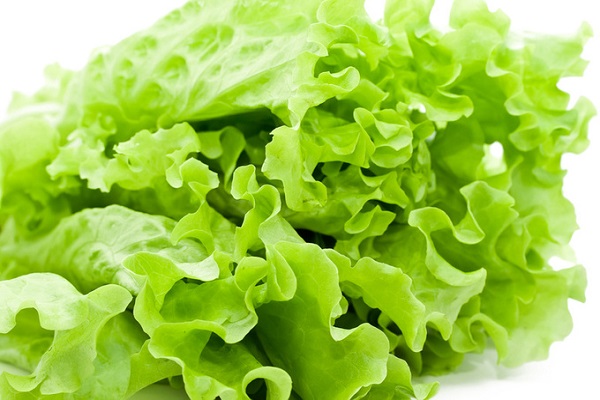


1 April 2018
Lettuce nutrition facts
Lettuce is one of the favorite green leafy vegetables. Its crispy, green/crimson-red leaves are one of the incredible sources of essential nutrients that benefit health. Indeed, it is among the most sought after greens, be it in your crunchy green salads or healthy sandwiches!
Lettuce leaves exude milk-like fluid (sap) when cut, and hence its name derived from Latin Lactuca for milk. Botanically this marvelous, nutrition rich leafy green belongs to the daisy family of Asteraceae.Scientific name: Lactuca sativa
Lactuca sativa is a small sized annual plant that flourishes well under sandy, humus soil. There are about six cultivars varieties exist based on their head formation and leaf structure. Leaf types with more bitter taste are rather rich in nutrients as well as antioxidants.
Here are some traditional varieties, grown around the globe:-
- Butterhead, with loose leaves; it has a buttery texture. Butterhead cultivars are most popular and widely cultivated in Europe.
- Chinese variety or celtuce: Features long, tapering, non-head forming leaves, and unlike its Western counterparts, it possesses strong-flavored leaves. However, celtuce is grown for its long stem which used as a vegetable. They are, therefore, preferred in stir-fries and stews.
- Crisp-head variety forms tight, dense heads that resemble cabbage. They are the mildest form and valued more for their crunchy texture than flavor. Cultivars of the crisp head are the most familiar type used in the USA.
- Loose-leaf variety features tender, delicate and flavorful leaves with a loose bunch. This group includes green oak leaf, red oak leaf, valeria, and lolla-rosa-types.
- Romaine lettuce grows to a long head of sturdy leaves with a stout rib almost reaching to the tip of the leaf-blade. Cultivars of Romaine are also the most popular types employed in the USA.
- Summer Crisp variety forms moderately dense heads with a crunchy texture; this type is intermediate between crisp-head and loose-leaf types.
Health benefits of Lettuce
- Lettuce leaves are one of the very low-calorie green vegetables. 100 g fresh greens provide just 15 calories. Nonetheless, they are the storehouse of many phytonutrients that possess health promoting and disease prevention properties.
- Vitamins in lettuce are plentiful. Its fresh leaves are an excellent source of several Vitamin-A and β-carotenes. Just 100 g of fresh, raw-lettuce provides 247% of daily vitamin A, and 4443 µg of β-carotene (Carotenes convert into vitamin-A in the body; 2 µg of carotene is considered equivalent to 1 IU of vitamin-A). These compounds have antioxidant properties. Vitamin A is required for maintaining healthy mucosa and skin and is also essential for vision. Consumption of natural fruits and vegetables rich in flavonoids helps to protect the body from lung and oral cavity cancers.
- It is a rich source of vitamin-K. Vitamin-K has a potential role in the bone metabolism where it thought to increase bone mass by promoting osteoblastic activity in the bone cells. It also has an established role in the Alzheimer's disease patients by limiting neuronal damage in the brain.
- Fresh leaves contain good amounts folates and vitamin C. Folates are part of co-factors in the enzyme metabolism required for DNA synthesis and therefore, play a vital role in the prevention of the neural tube defects in the baby (fetus) during pregnancy.
- Vitamin C is a powerful natural antioxidant; regular consumption of foods rich in vitamin-C helps the body develop resistance against infectious agents and scavenge harmful, pro-inflammatory free radicals.
- Zeaxanthin (1730 µg per 100 g), an important dietary carotenoid in lettuce, is selectively absorbed into the retinal macula lutea, where it thought to provide antioxidant and filter UV rays damaging the retina. Diet rich in xanthin and carotenes is believed to offer some protection against age-related macular disease (ARMD) in the older adults.
- It also contains healthy amounts of minerals like iron, calcium, magnesium, and potassium, which are very much essential for body metabolism. Potassium is an important component of cell and body fluids that helps controlling heart rate and blood pressure. The body uses manganese as a co-factor for the antioxidant enzyme, superoxide dismutase. Copper required in the production of red blood cells. Iron is essential for red blood cell formation.
- It is rich in the B-complex group of vitamins like thiamin, vitamin B-6 (pyridoxine), riboflavins.
Regular inclusion of lettuce in salads is known to prevent osteoporosis, iron-deficiency anemia, and believed to protect from cardiovascular diseases, ARMD, Alzheimer's disease and cancers.
[apss_share]





